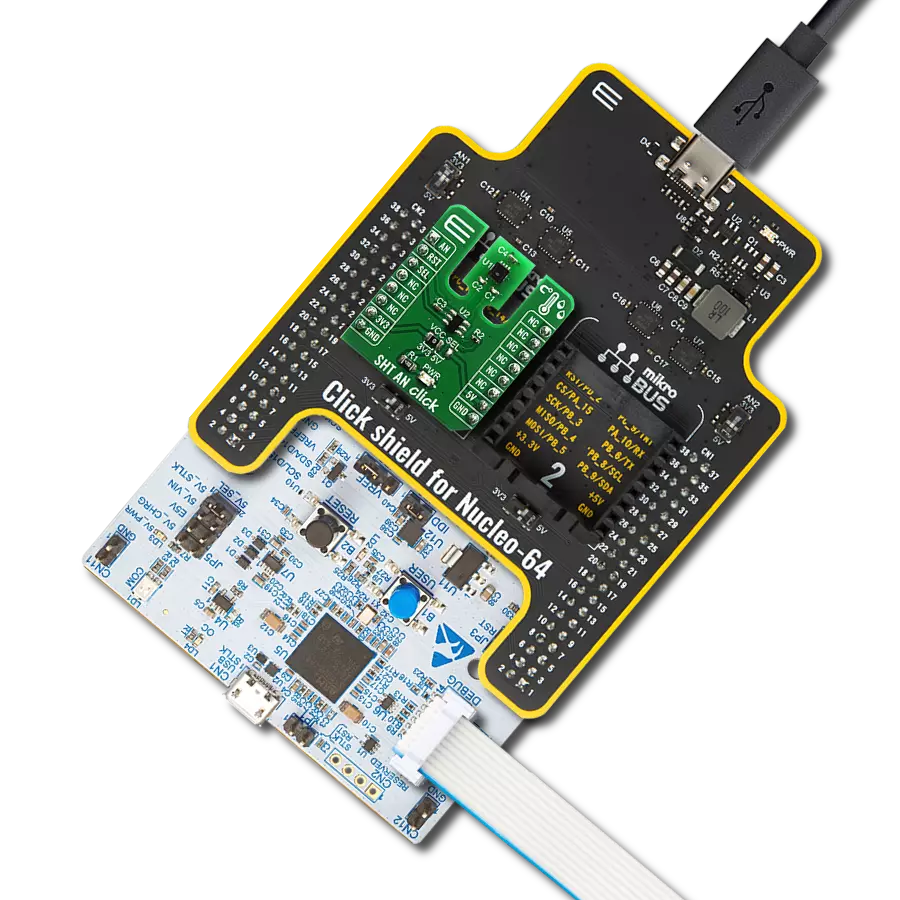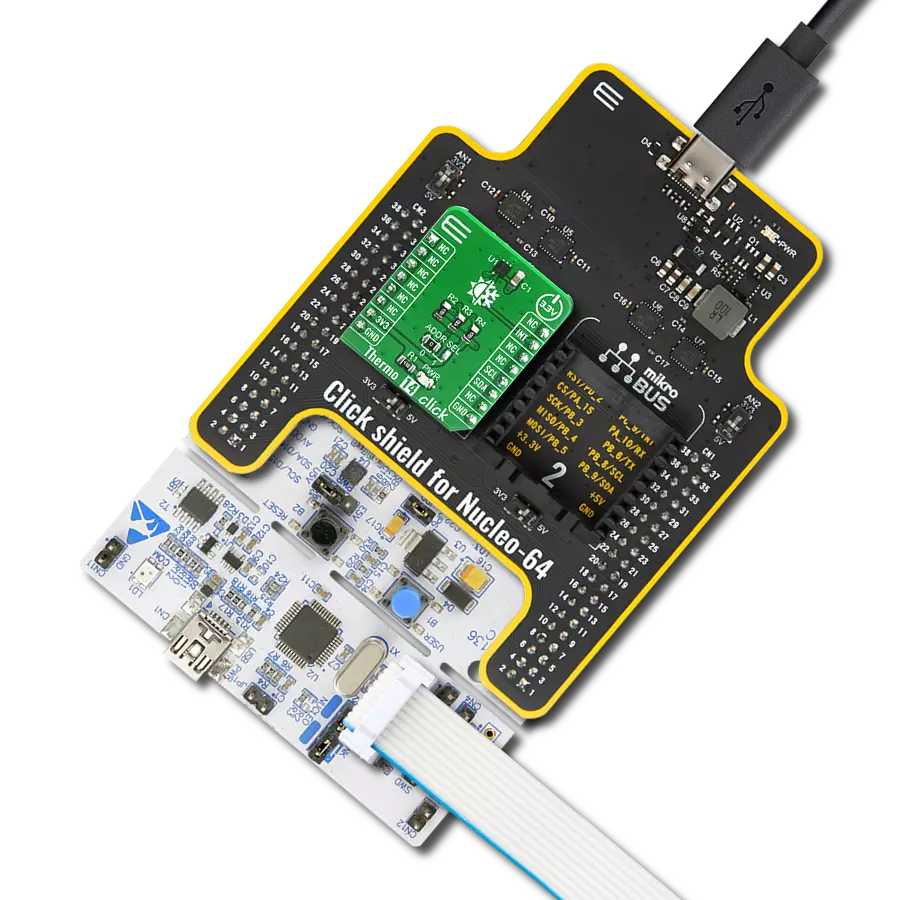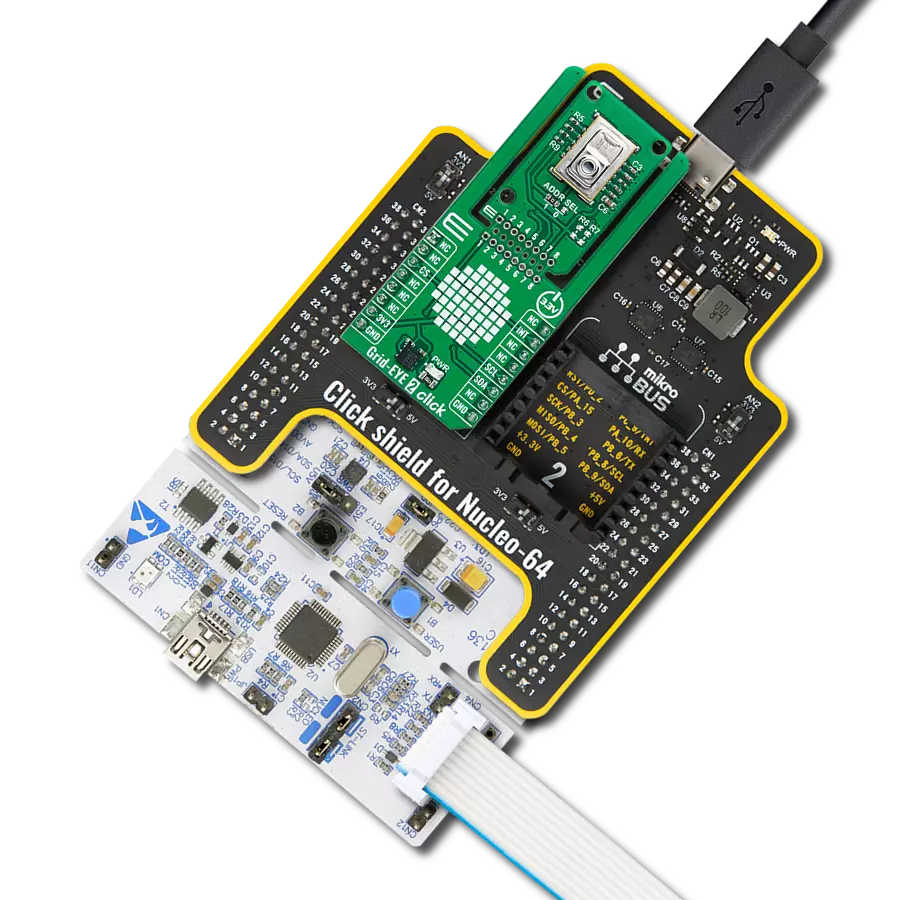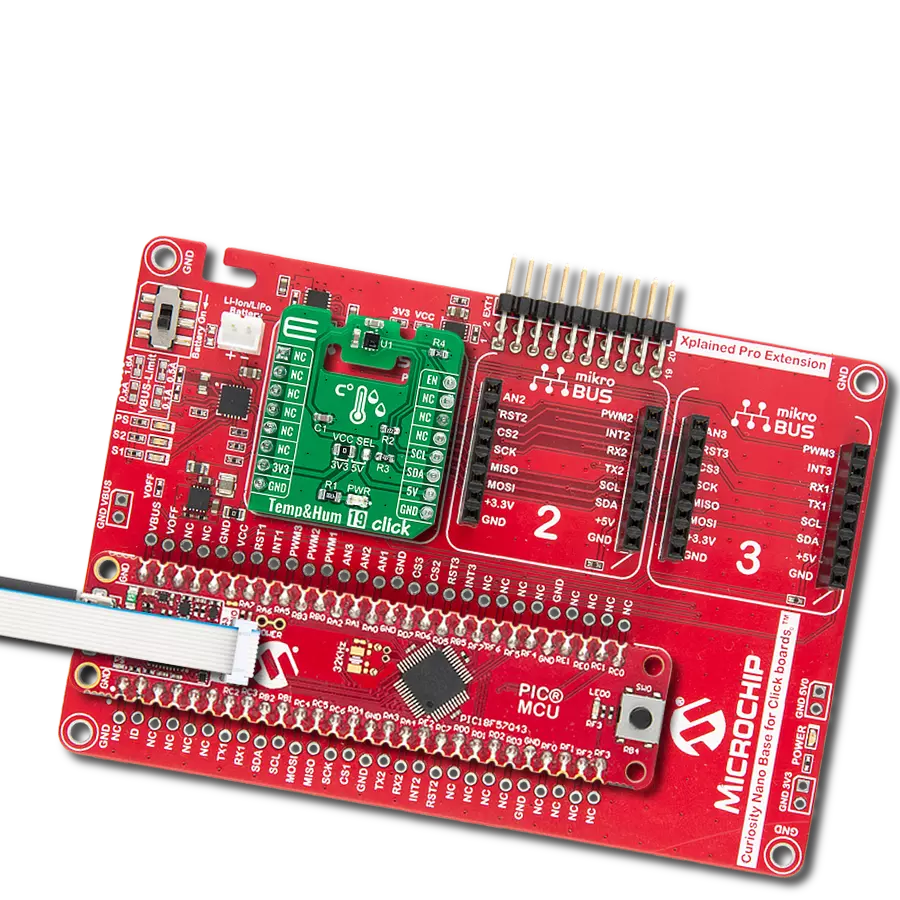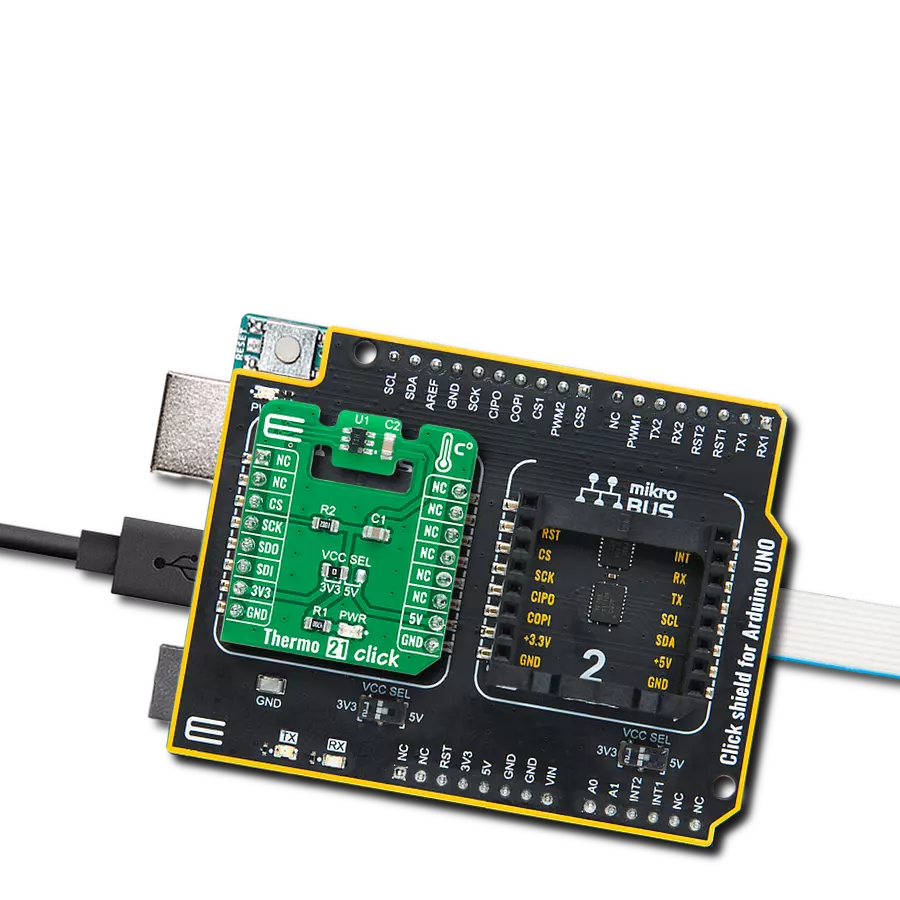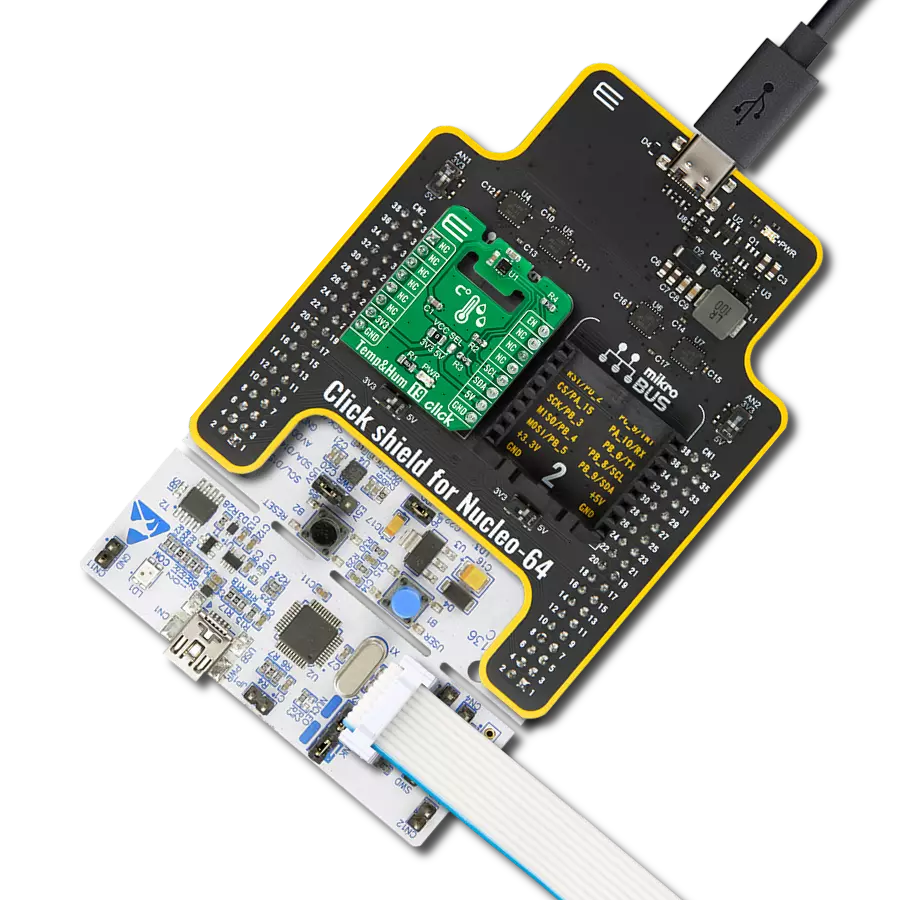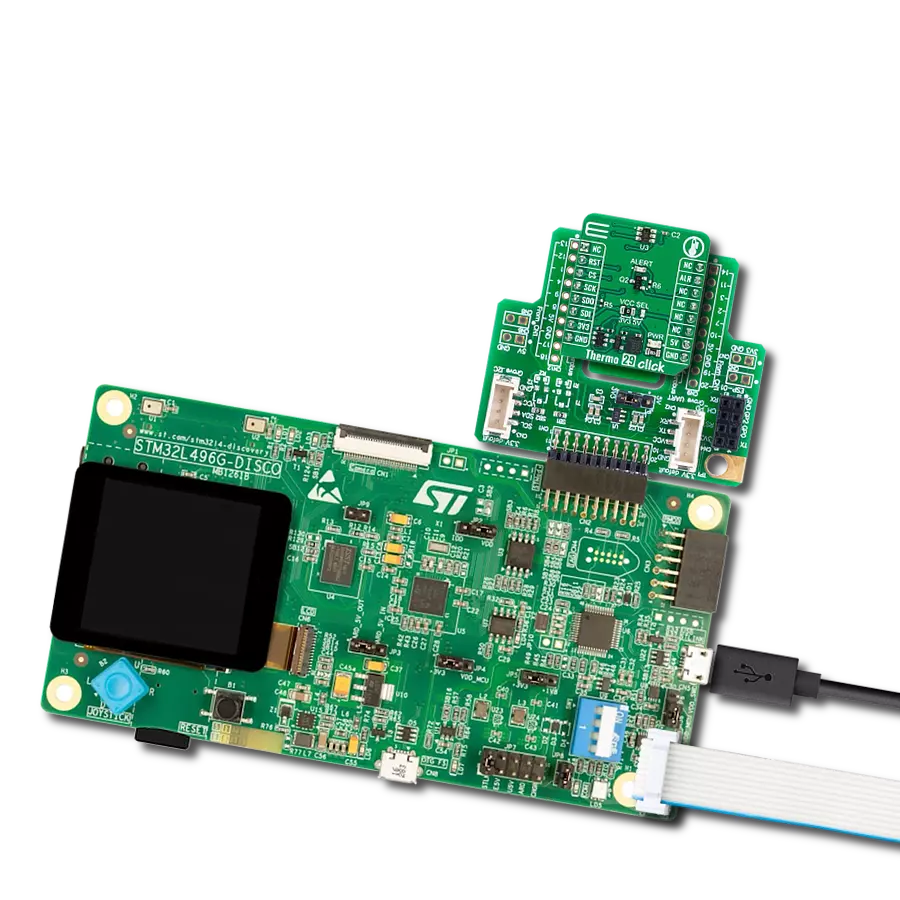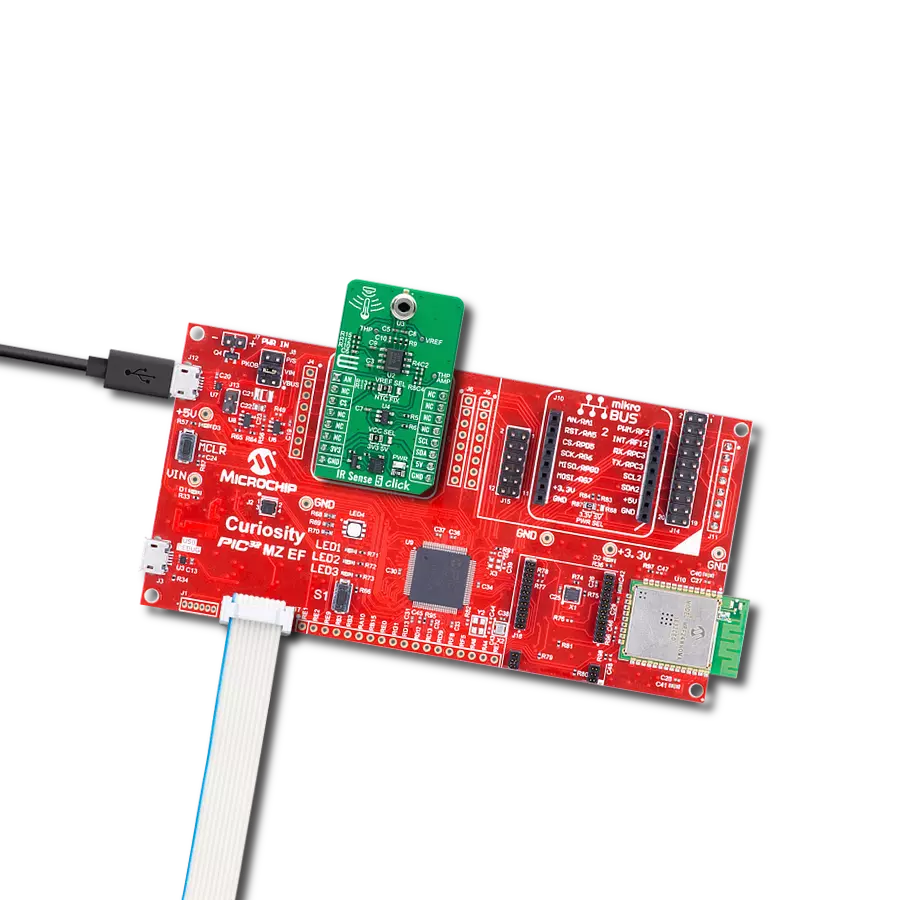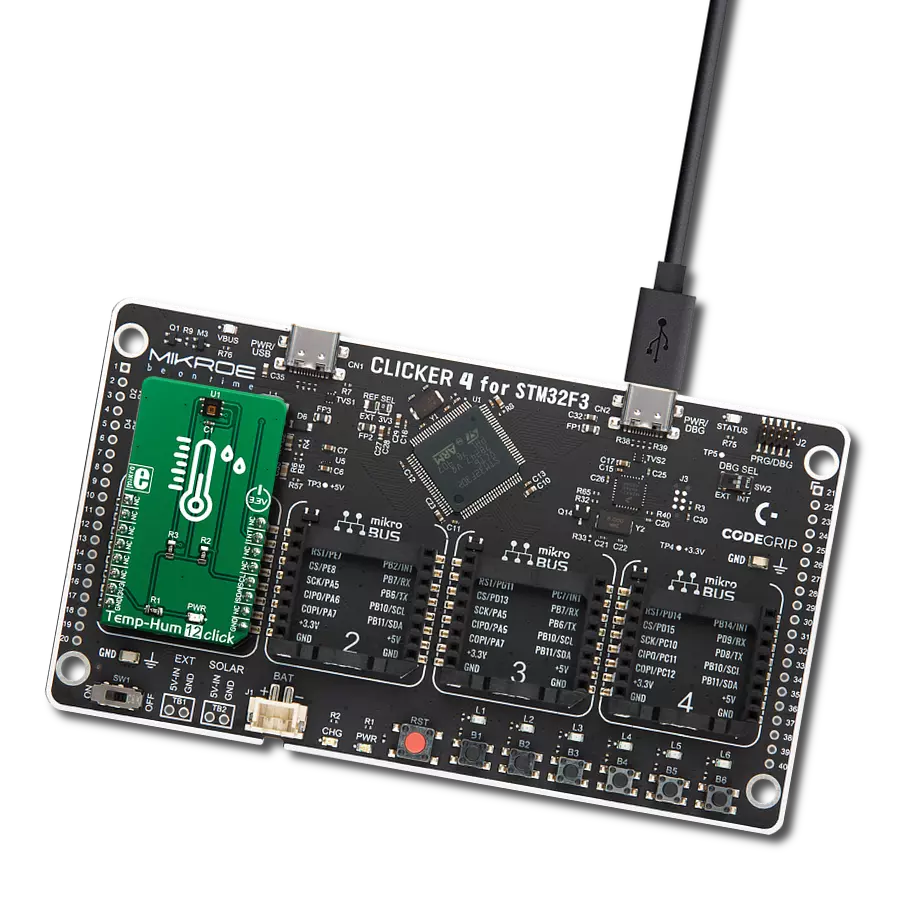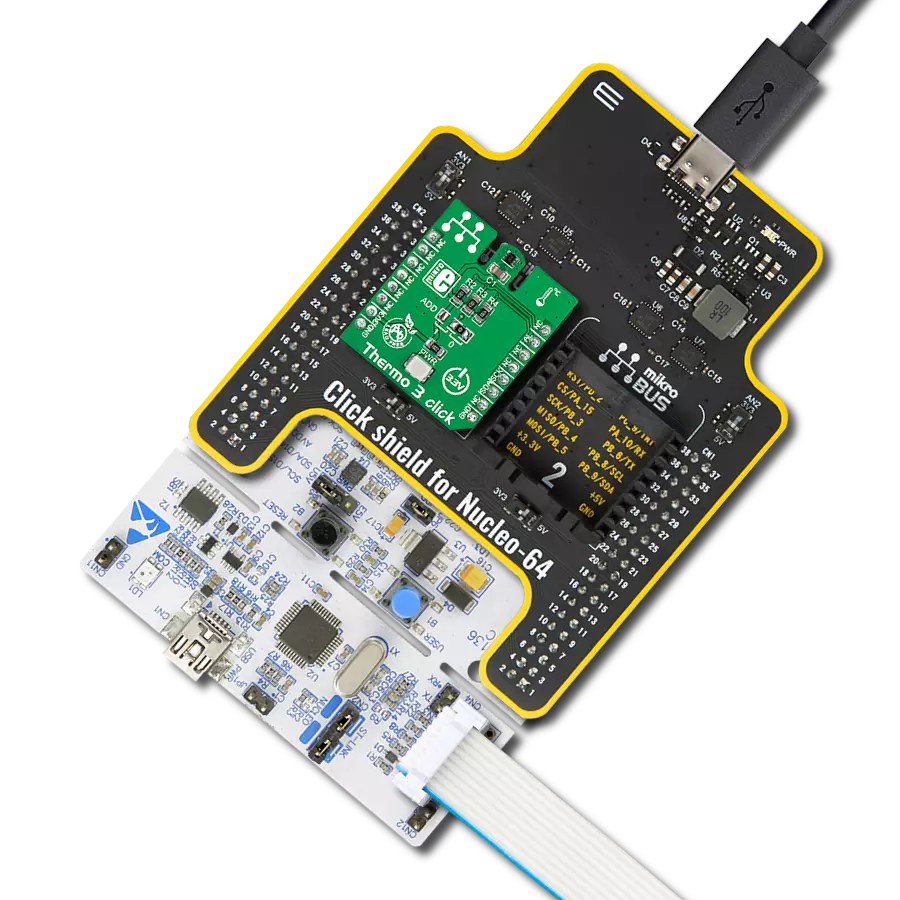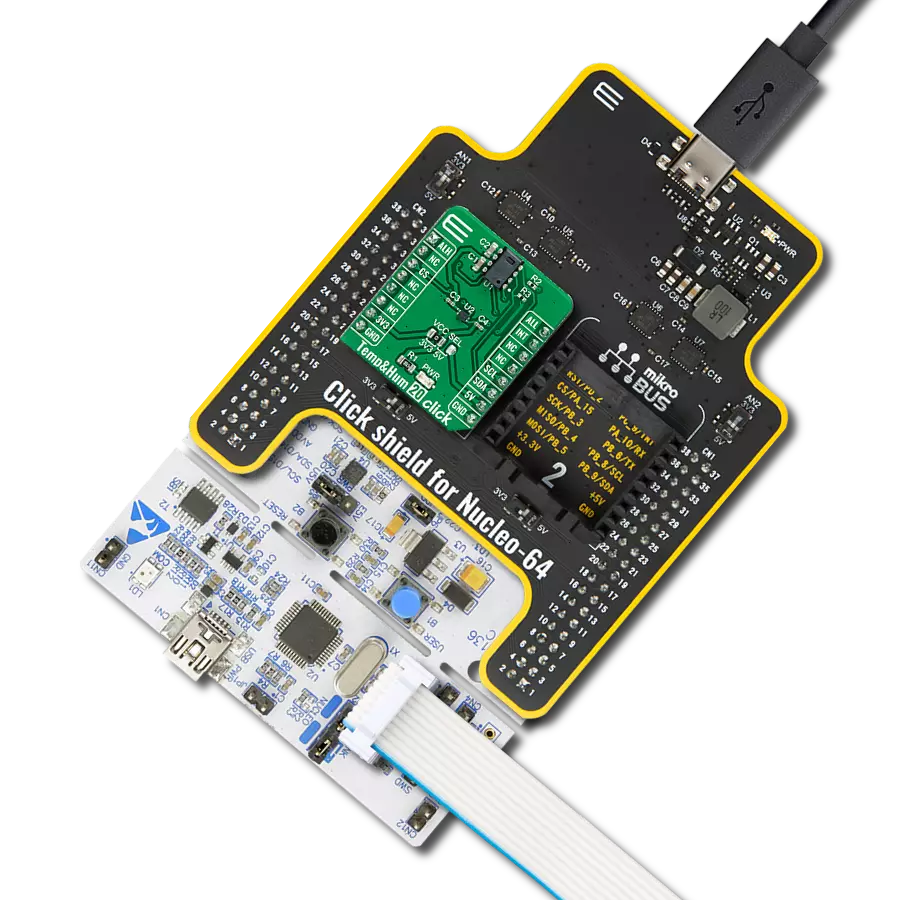Experience the power of contactless temperature monitoring for swift, accurate, and reliable results!
A
A
Hardware Overview
How does it work?
IrThermo 2 Click is based on the TMP007, an infrared thermopile sensor with an integrated Math Engine from Texas Instruments. When there is infrared radiation, and the sensor absorbs it, the integrated Math Engine calculates its temperature by comparing it with the temperature of the silicon die. The sensor is factory calibrated, but the user can adjust the calibration coefficients for specific applications. This adjustment could be the correction for the range, field of view, object shape, and environmental factors. Besides the direct
reading of the object temperature, Math Engine features programmable alerts, nonvolatile memory (EEPROM) for storing calibration coefficients, and transient correction. The IrThermo 2 Click uses an industry-standard I2C interface to communicate with the host MCU over the mikroBUS™ socket. One of eight programmable I2C addresses can be set over the ADR1 and ADR0 solder jumpers labeled ADDR SEL and positions 1 and 0. Those jumpers are set to 0 (GND) by default. It also features an active LOW
alert output on pin AL that can be used as an alert function if the TMP007 is working in an interrupt mode. This Click board™ can operate with either 3.3V or 5V logic voltage levels selected via an onboard jumper. This way, both 3.3V and 5V capable MCUs can use the communication lines properly. However, the Click board™ comes equipped with a library containing easy-to-use functions and an example code that can be used, as a reference, for further development.
Features overview
Development board
Flip&Click PIC32MZ is a compact development board designed as a complete solution that brings the flexibility of add-on Click boards™ to your favorite microcontroller, making it a perfect starter kit for implementing your ideas. It comes with an onboard 32-bit PIC32MZ microcontroller, the PIC32MZ2048EFH100 from Microchip, four mikroBUS™ sockets for Click board™ connectivity, two USB connectors, LED indicators, buttons, debugger/programmer connectors, and two headers compatible with Arduino-UNO pinout. Thanks to innovative manufacturing technology,
it allows you to build gadgets with unique functionalities and features quickly. Each part of the Flip&Click PIC32MZ development kit contains the components necessary for the most efficient operation of the same board. In addition, there is the possibility of choosing the Flip&Click PIC32MZ programming method, using the chipKIT bootloader (Arduino-style development environment) or our USB HID bootloader using mikroC, mikroBasic, and mikroPascal for PIC32. This kit includes a clean and regulated power supply block through the USB Type-C (USB-C) connector. All communication
methods that mikroBUS™ itself supports are on this board, including the well-established mikroBUS™ socket, user-configurable buttons, and LED indicators. Flip&Click PIC32MZ development kit allows you to create a new application in minutes. Natively supported by Mikroe software tools, it covers many aspects of prototyping thanks to a considerable number of different Click boards™ (over a thousand boards), the number of which is growing every day.
Microcontroller Overview
MCU Card / MCU
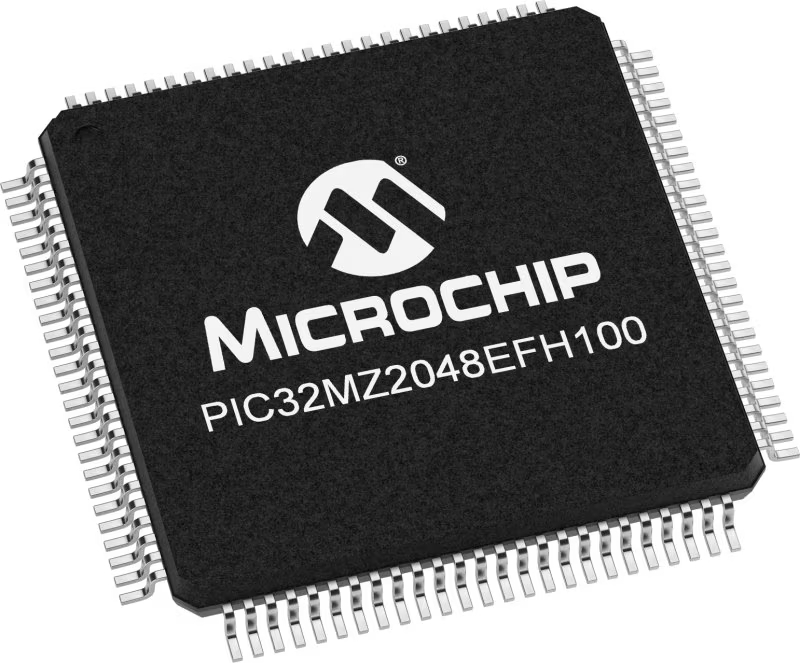
Architecture
PIC32
MCU Memory (KB)
2048
Silicon Vendor
Microchip
Pin count
100
RAM (Bytes)
524288
Used MCU Pins
mikroBUS™ mapper
Take a closer look
Click board™ Schematic

Step by step
Project assembly
Track your results in real time
Application Output
1. Application Output - In Debug mode, the 'Application Output' window enables real-time data monitoring, offering direct insight into execution results. Ensure proper data display by configuring the environment correctly using the provided tutorial.

2. UART Terminal - Use the UART Terminal to monitor data transmission via a USB to UART converter, allowing direct communication between the Click board™ and your development system. Configure the baud rate and other serial settings according to your project's requirements to ensure proper functionality. For step-by-step setup instructions, refer to the provided tutorial.

3. Plot Output - The Plot feature offers a powerful way to visualize real-time sensor data, enabling trend analysis, debugging, and comparison of multiple data points. To set it up correctly, follow the provided tutorial, which includes a step-by-step example of using the Plot feature to display Click board™ readings. To use the Plot feature in your code, use the function: plot(*insert_graph_name*, variable_name);. This is a general format, and it is up to the user to replace 'insert_graph_name' with the actual graph name and 'variable_name' with the parameter to be displayed.

Software Support
Library Description
This library contains API for IrThermo 2 Click driver.
Key functions:
irthermo2_get_raw_temperature- Function read 16-bit data from raw temperature register and calculate temperature in degrees Celsiusirthermo2_get_object_temperature_c- Function read 16-bit data from object temperature register and calculate temperature in degrees Celsiusirthermo2_get_object_temperature_f- Function read 16-bit data from object temperature register and calculate temperature in degrees Fahrenheit
Open Source
Code example
The complete application code and a ready-to-use project are available through the NECTO Studio Package Manager for direct installation in the NECTO Studio. The application code can also be found on the MIKROE GitHub account.
/*!
* @file main.c
* @brief IrThermo2 Click example
*
* # Description
* IrThermo 2 is a non-contact temperature measurement Click. The sensor absorbs the infrared
* radiation emitted by the target object (withing the sensor’s field of view) and
* the integrated math engine calculates its temperature by comparing it with the temperature
* of the silicon die. The measurement range of the sensor is between –40°C to 125°C.
*
* The demo application is composed of two sections :
*
* ## Application Init
* Initialization driver enable's - I2C, set default configuration and start write log.
*
* ## Application Task
* This is a example which demonstrates the use of IrThermo 2 Click board.
* Measures the object temperature value from sensor and calculate temperature in degrees Celsius [ C ].
* Results are being sent to the USART Terminal where you can track their changes.
* All data logs on usb uart for aproximetly every 5 sec when the data value changes.
*
*
* @author MikroE Team
*
*/
#include "board.h"
#include "log.h"
#include "irthermo2.h"
static irthermo2_t irthermo2;
static log_t logger;
static float temperature;
void application_init ( void )
{
log_cfg_t log_cfg;
irthermo2_cfg_t cfg;
/**
* Logger initialization.
* Default baud rate: 115200
* Default log level: LOG_LEVEL_DEBUG
* @note If USB_UART_RX and USB_UART_TX
* are defined as HAL_PIN_NC, you will
* need to define them manually for log to work.
* See @b LOG_MAP_USB_UART macro definition for detailed explanation.
*/
LOG_MAP_USB_UART( log_cfg );
log_init( &logger, &log_cfg );
log_info( &logger, "---- Application Init ----" );
// Click initialization.
irthermo2_cfg_setup( &cfg );
IRTHERMO2_MAP_MIKROBUS( cfg, MIKROBUS_1 );
irthermo2_init( &irthermo2, &cfg );
irthermo2_default_cfg( &irthermo2 );
Delay_ms ( 100 );
log_info( &logger, "---- Application Task ----" );
}
void application_task ( void )
{
temperature = irthermo2_get_object_temperature_c( &irthermo2 );
log_printf( &logger, " Temperature : %.2f C\r\n", temperature );
log_printf( &logger, "---------------------------\r\n" );
Delay_ms ( 1000 );
}
int main ( void )
{
/* Do not remove this line or clock might not be set correctly. */
#ifdef PREINIT_SUPPORTED
preinit();
#endif
application_init( );
for ( ; ; )
{
application_task( );
}
return 0;
}
// ------------------------------------------------------------------------ END

















